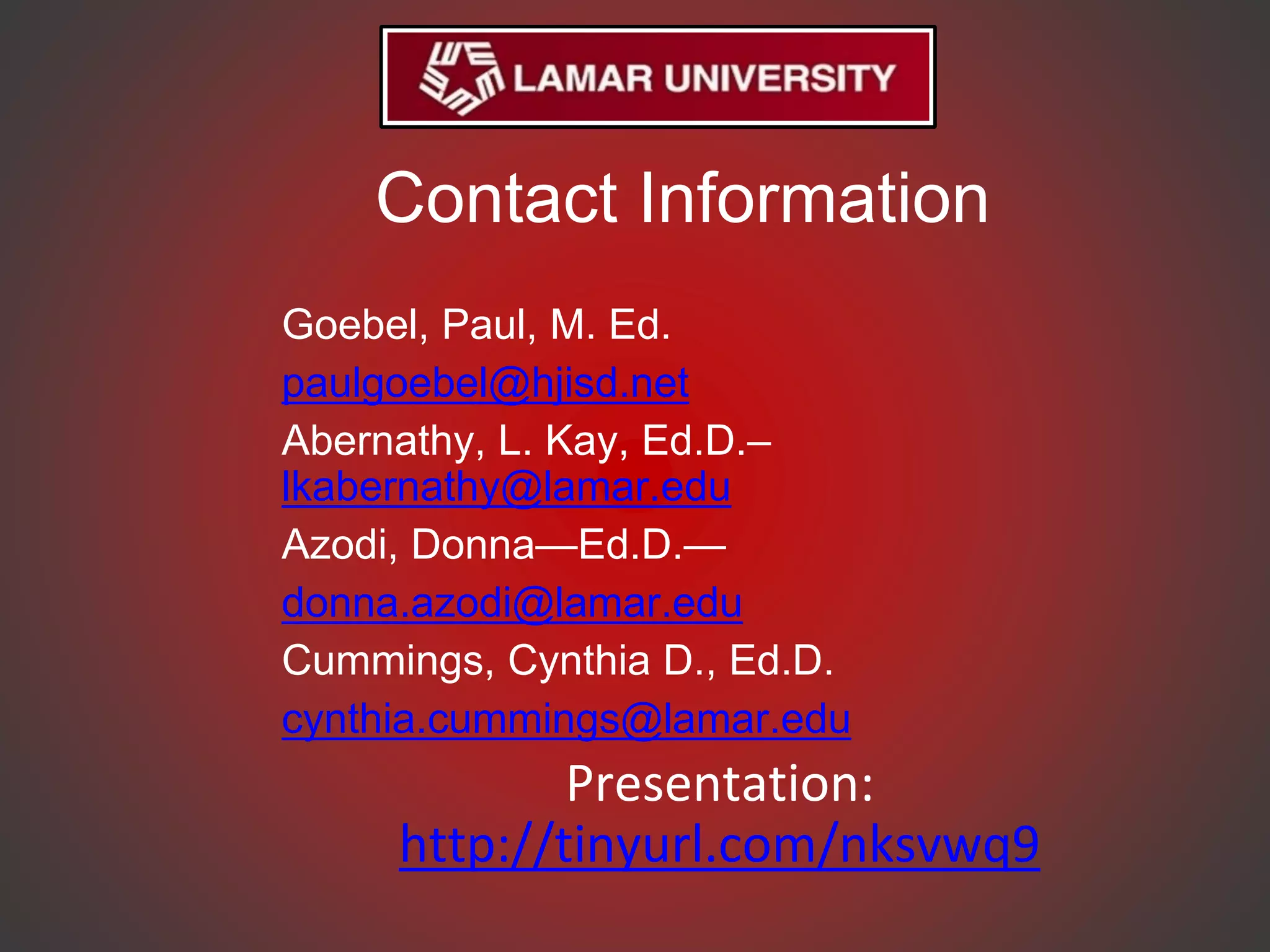This action research study assessed the effectiveness of professional development activities during a 1:1 iPad initiative at a high school in Southeast Texas. The study used surveys of 20 teachers to evaluate factors like the adequacy of training, obstacles to professional development and technology integration, and the perceived responsibilities of teachers and technology specialists. Key findings included that 75% of teachers felt training was adequate but time constraints, generalized content, and device troubleshooting hindered integration. Recommendations focused on differentiating training and developing personalized learning plans with departmental collaboration.
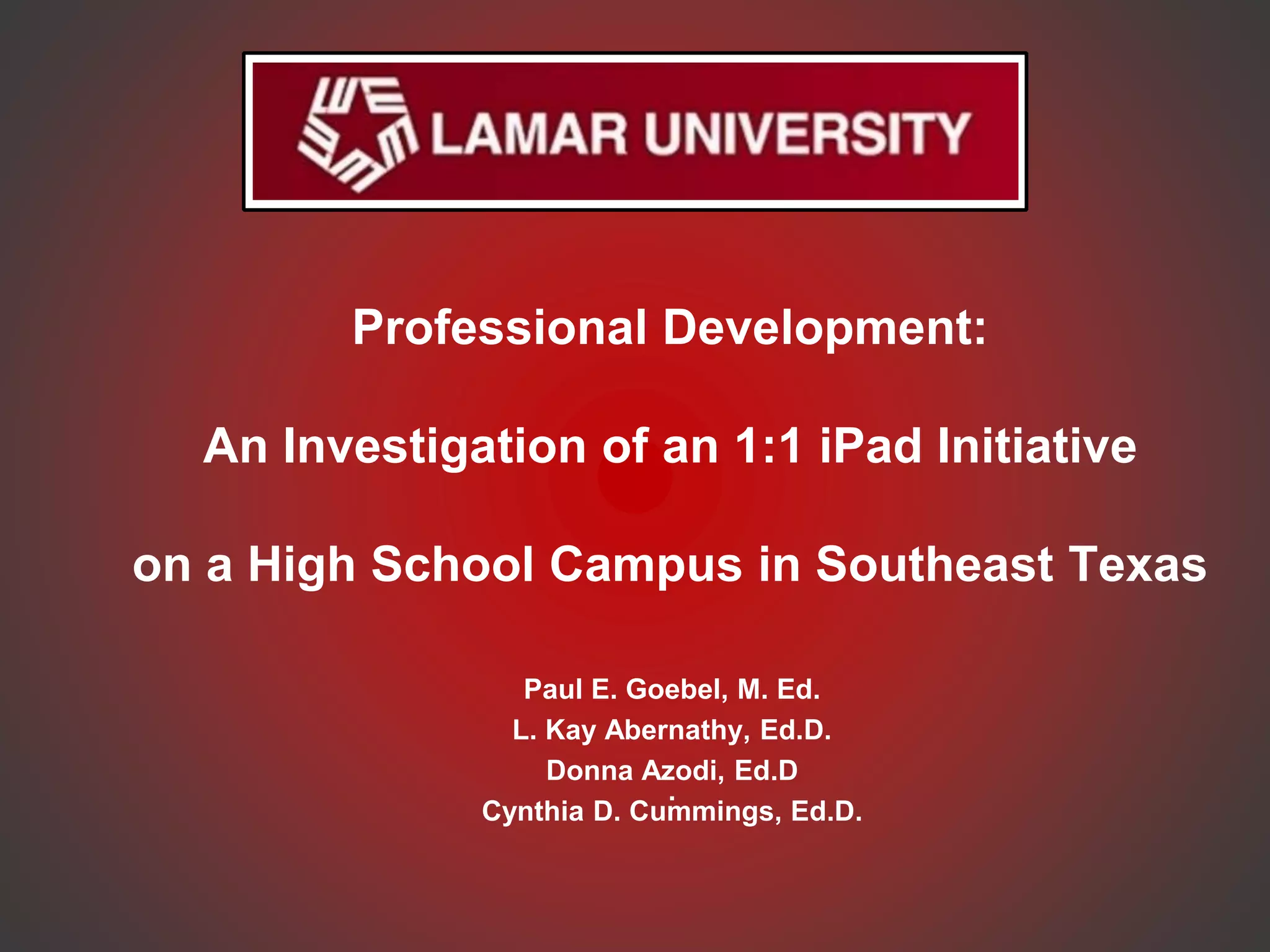
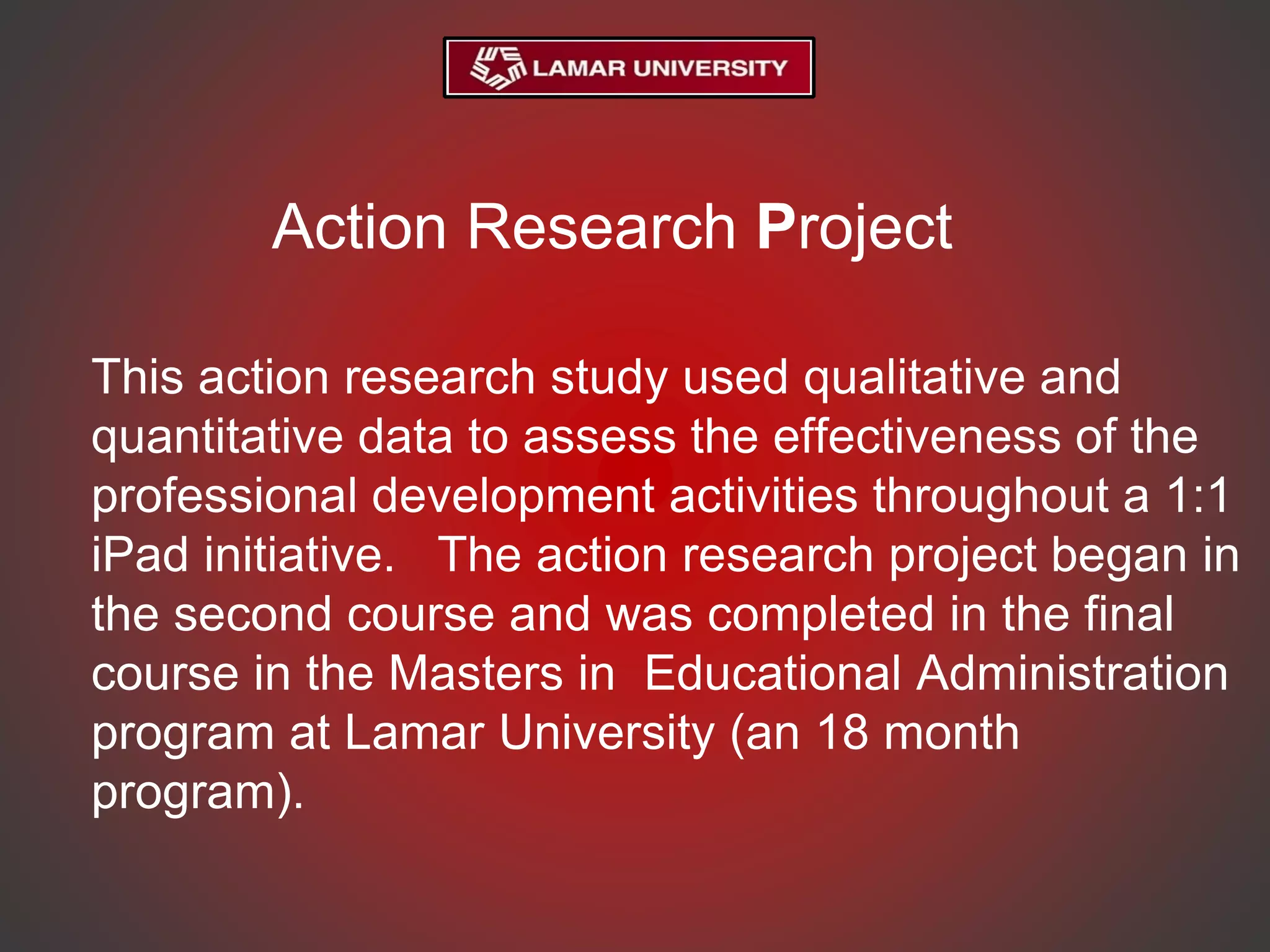
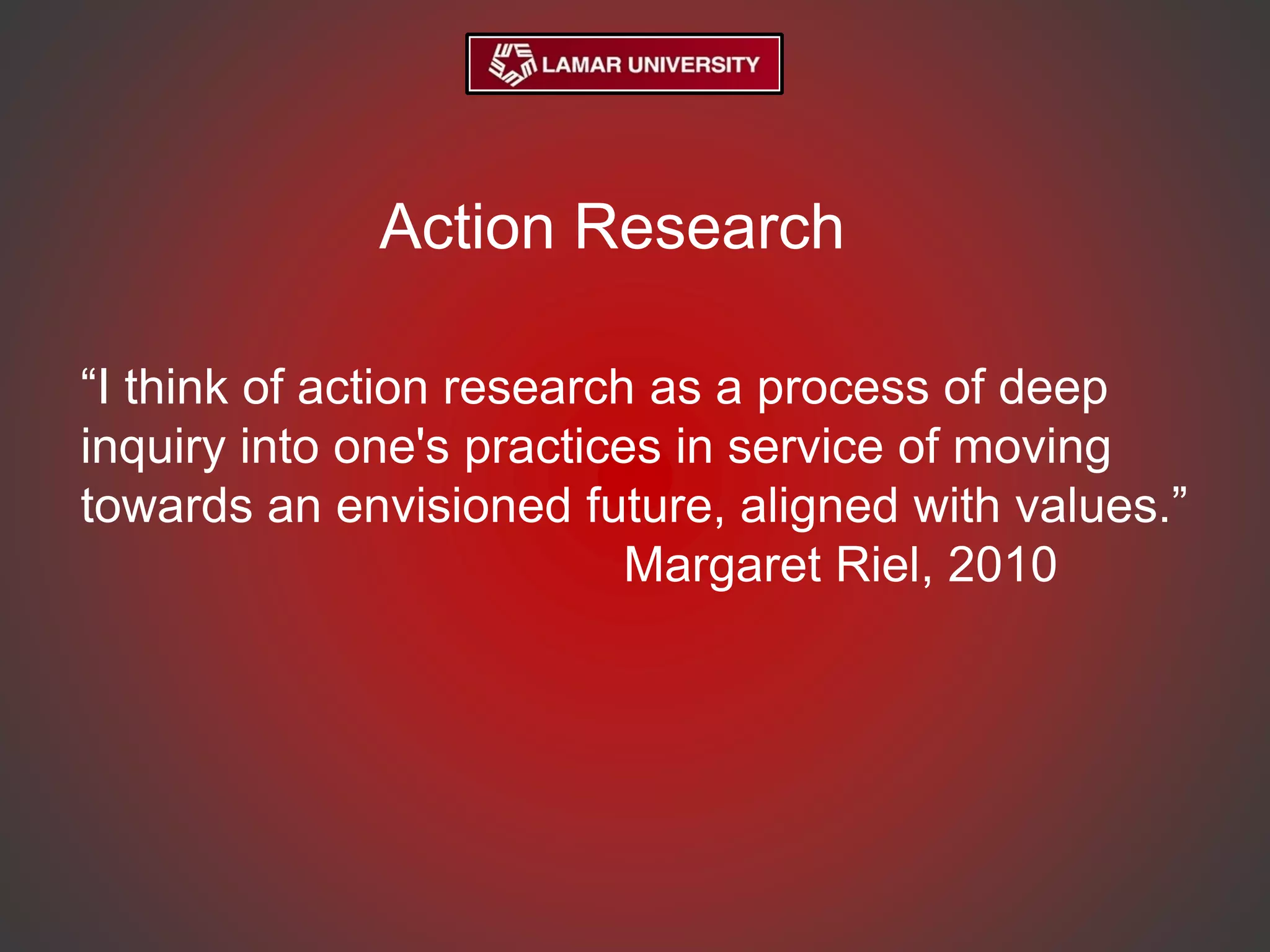
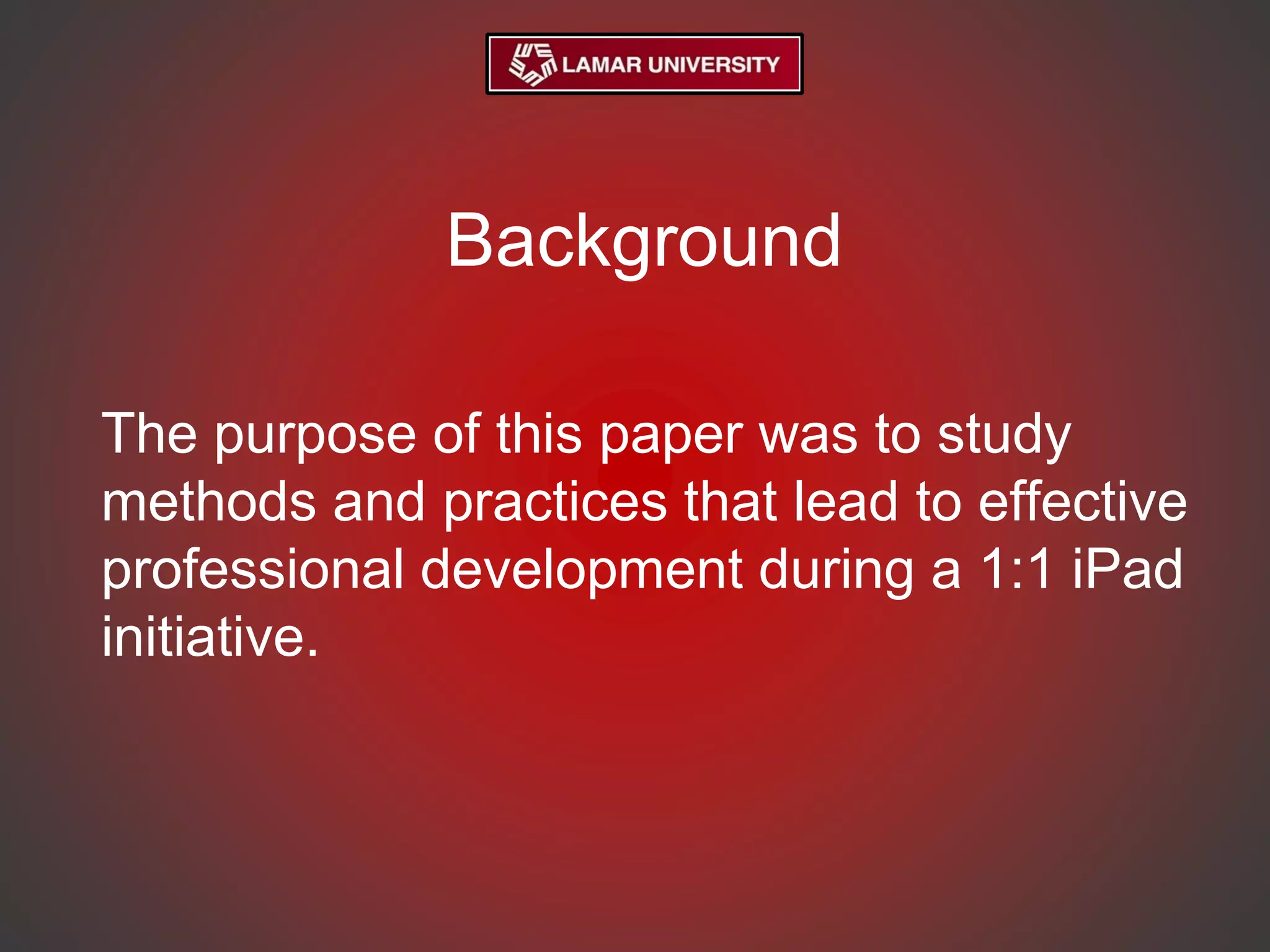
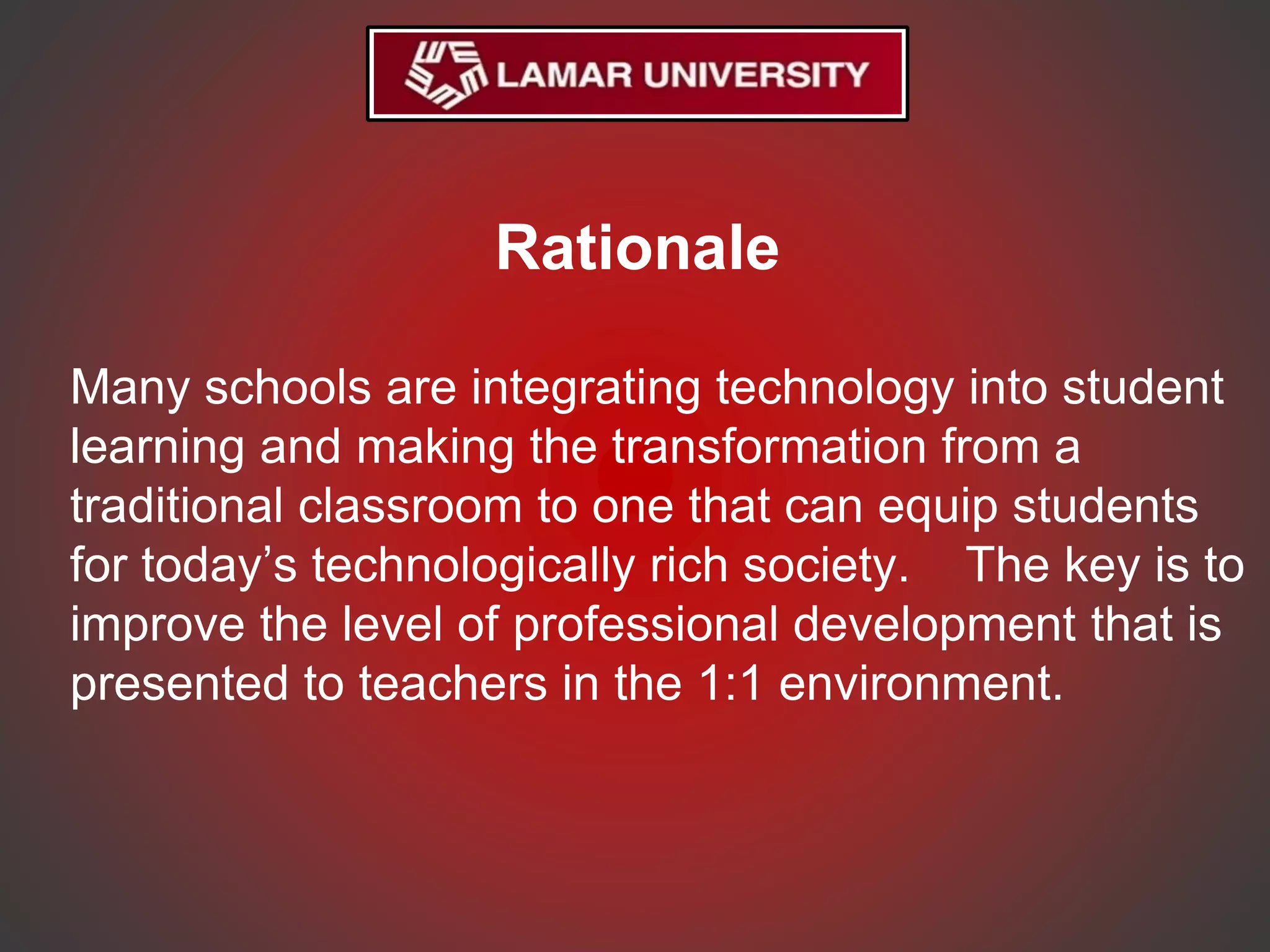
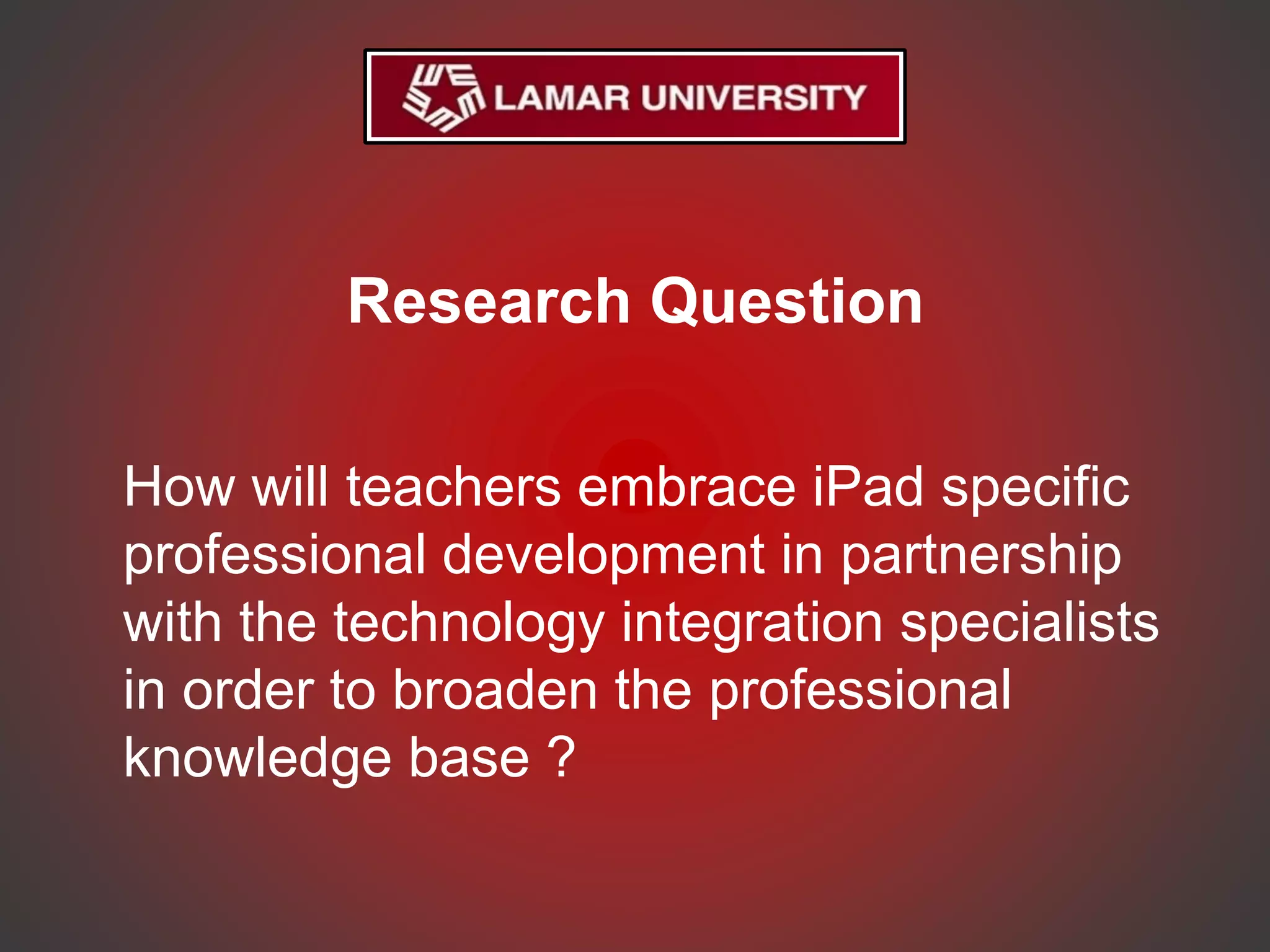
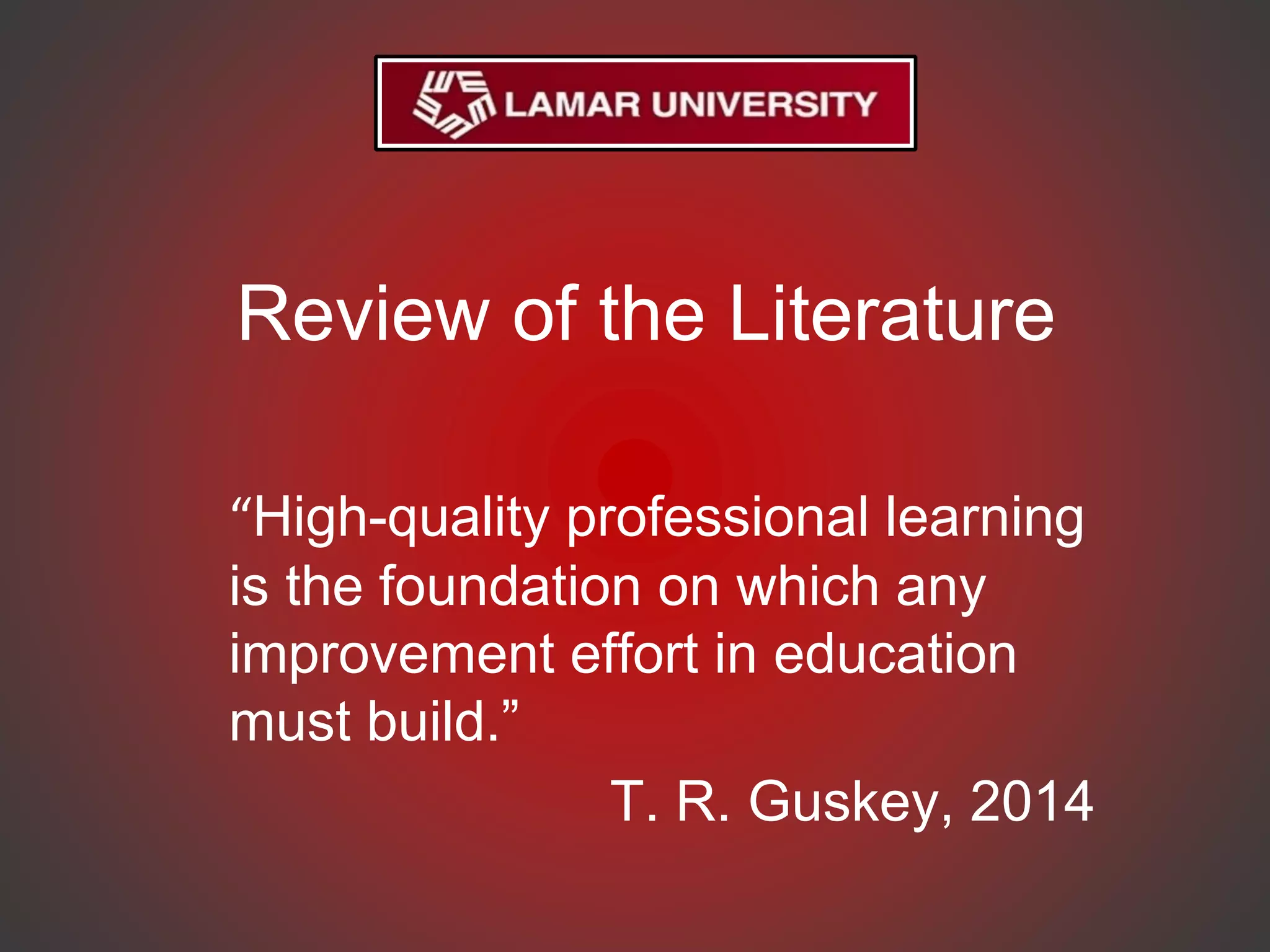
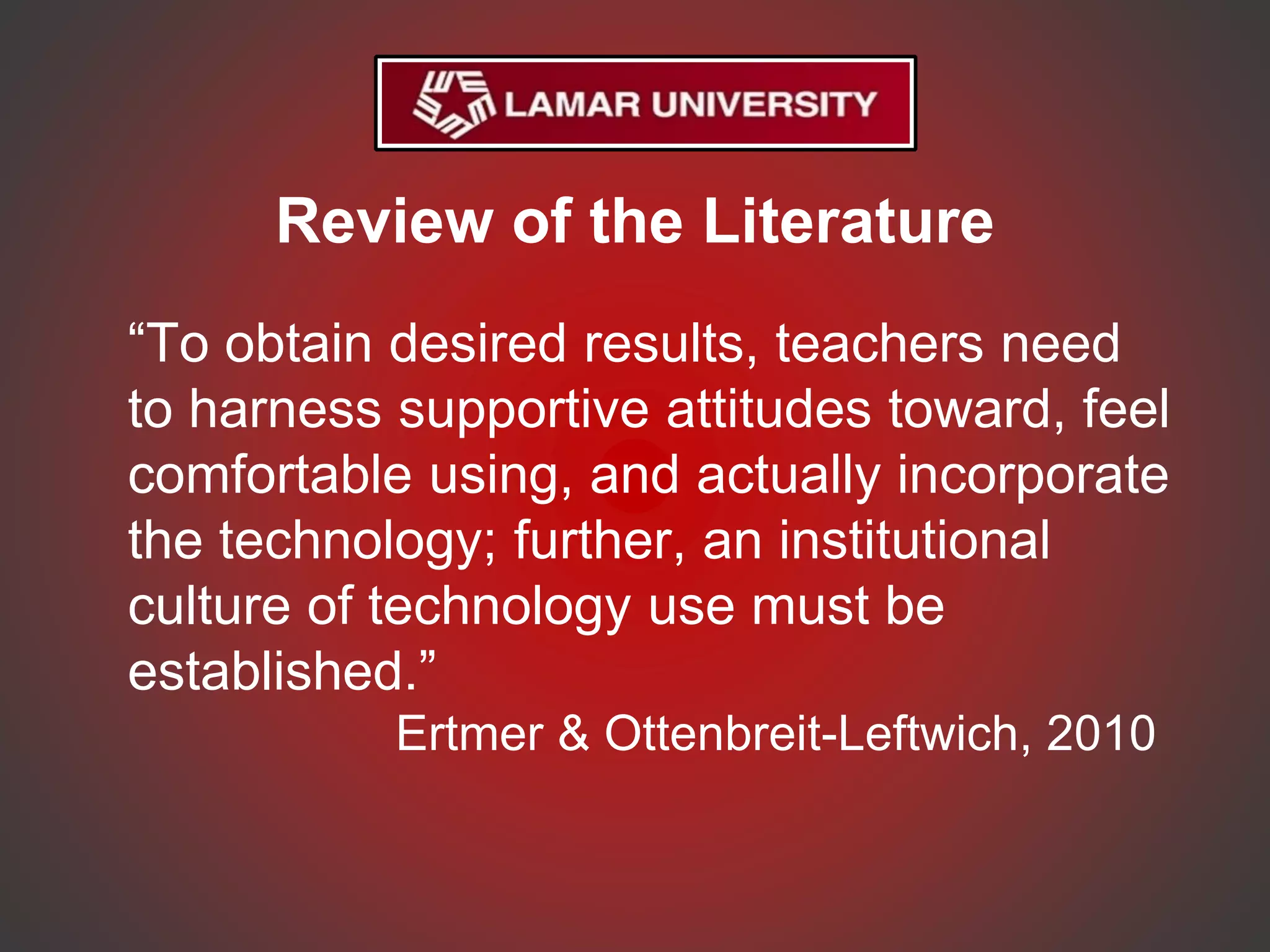
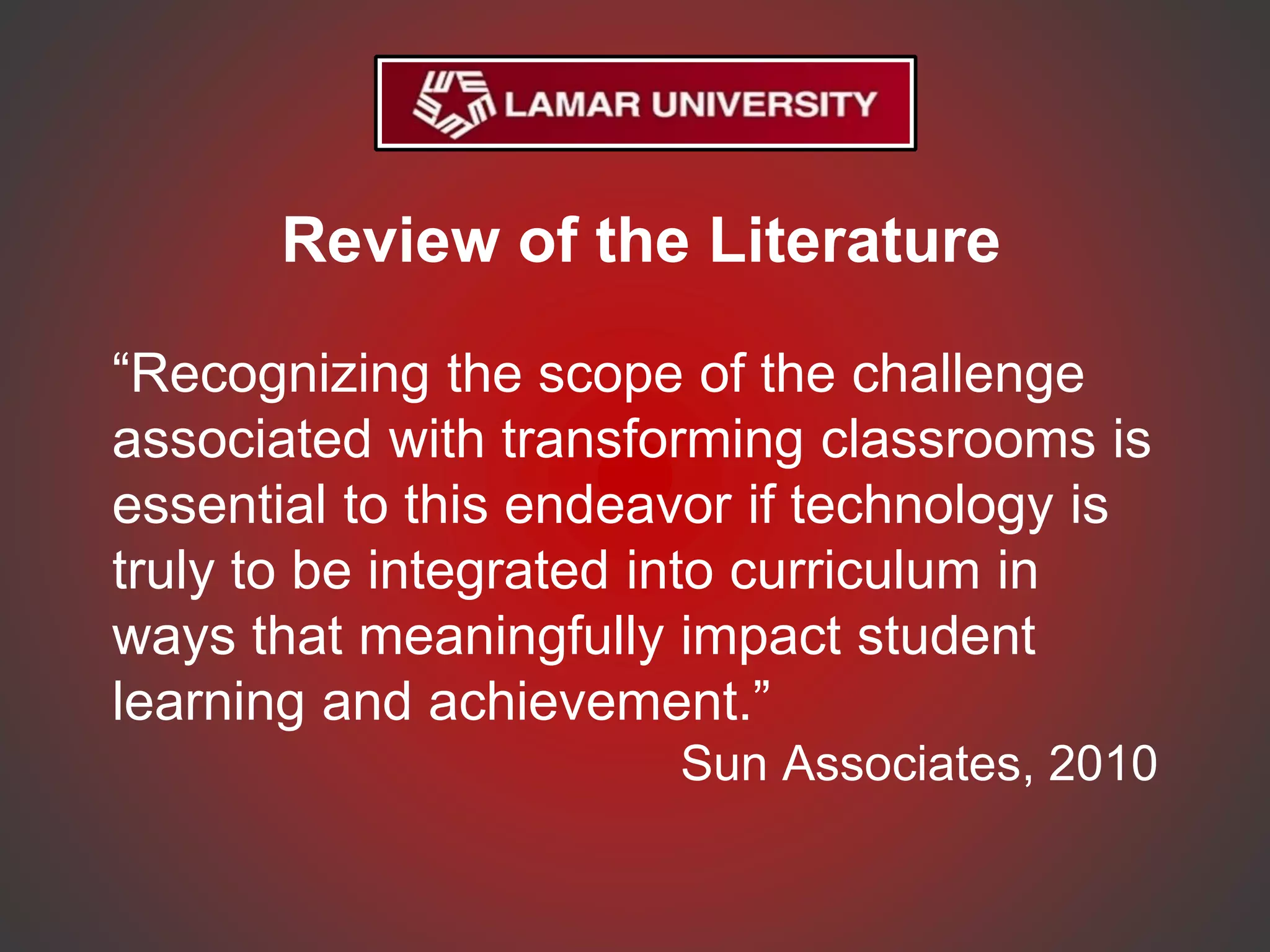
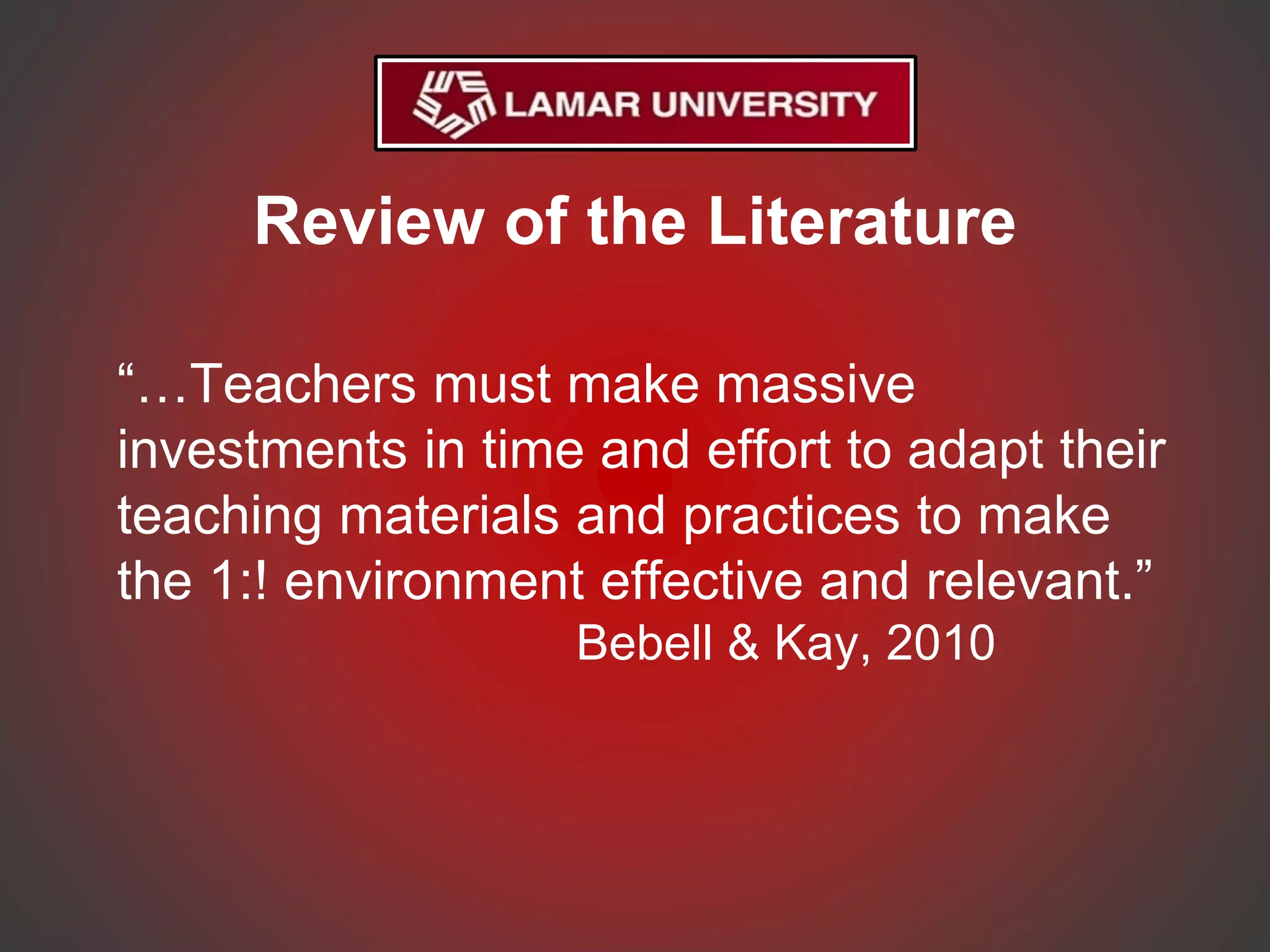
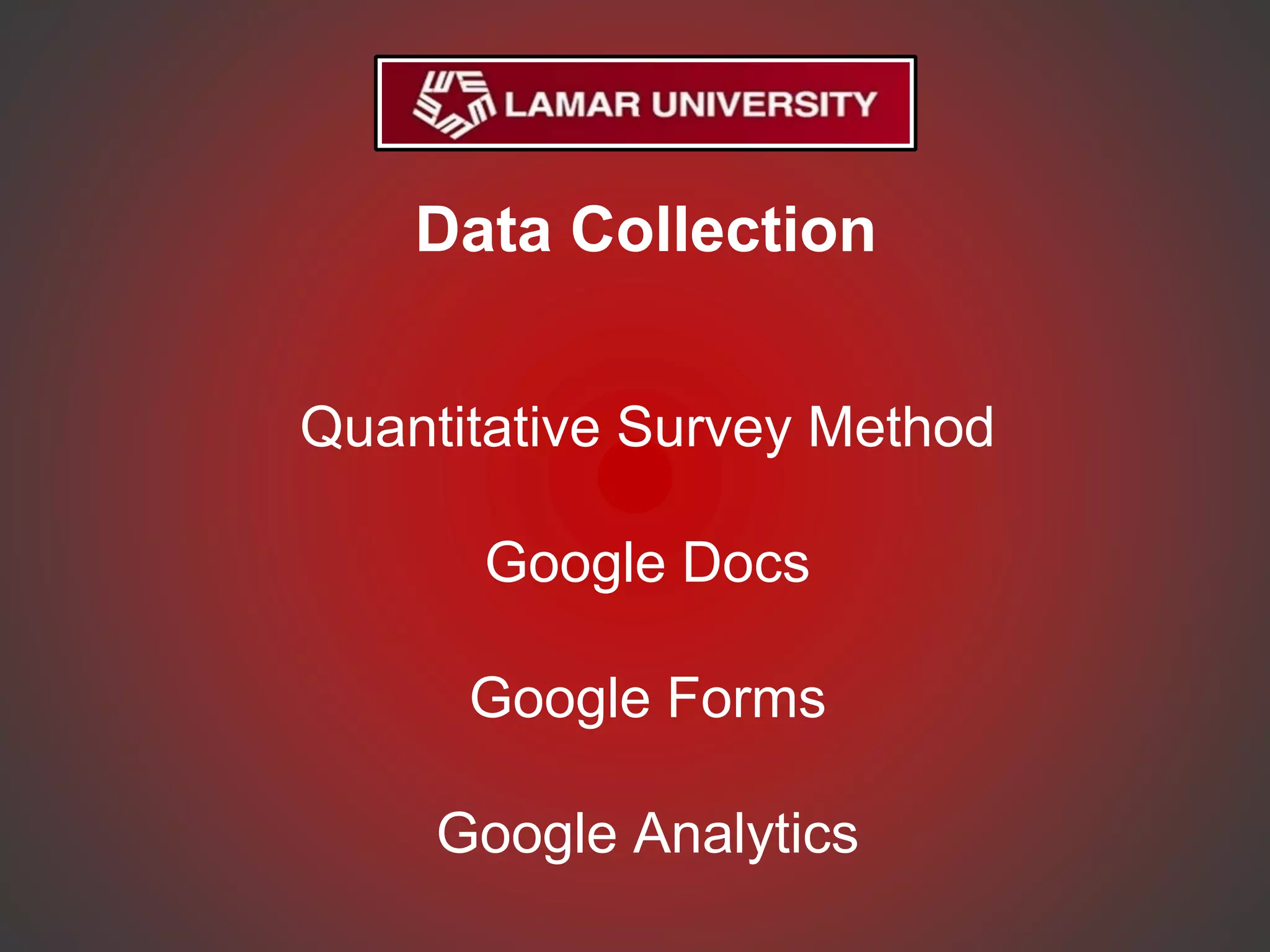
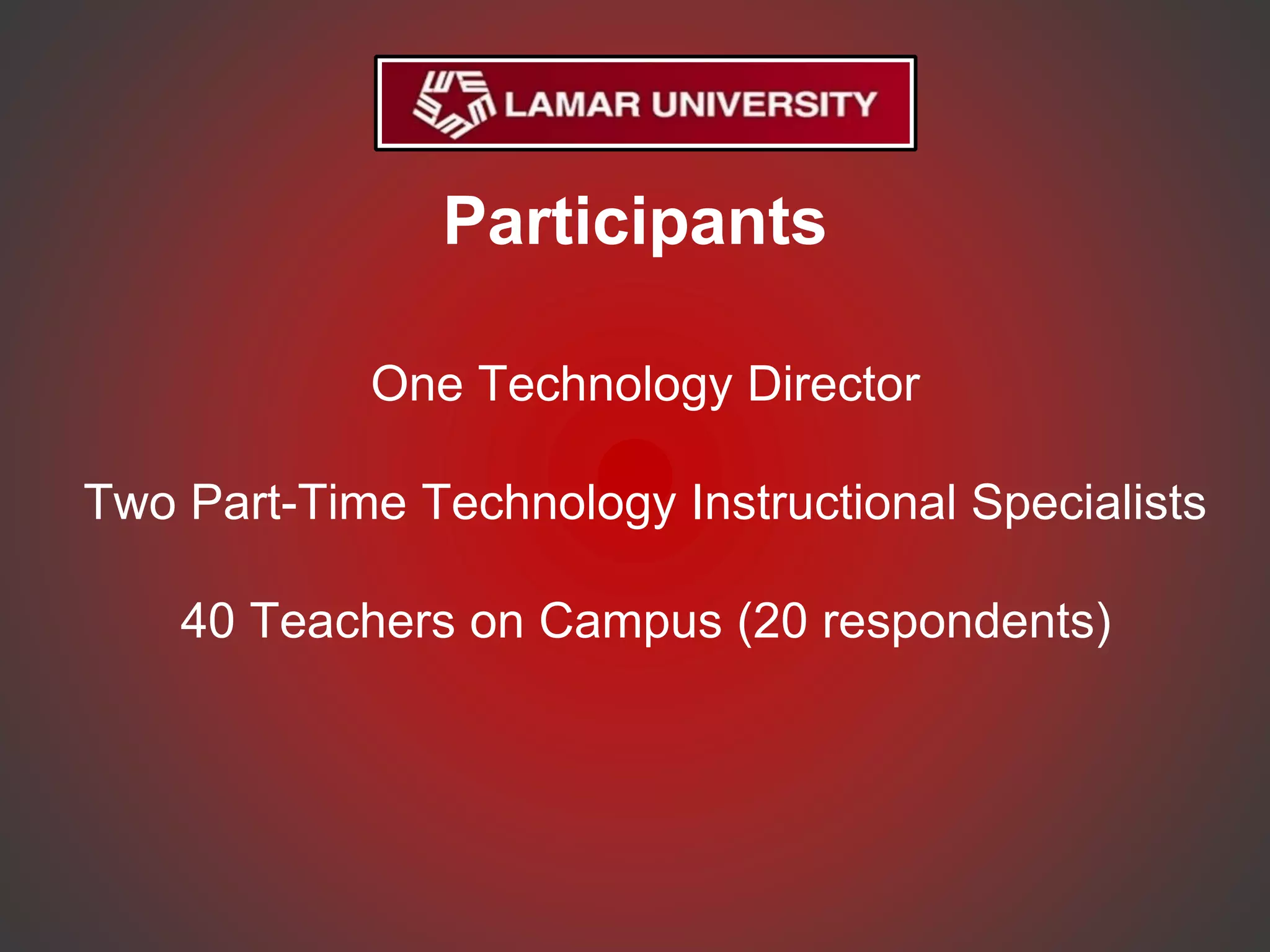
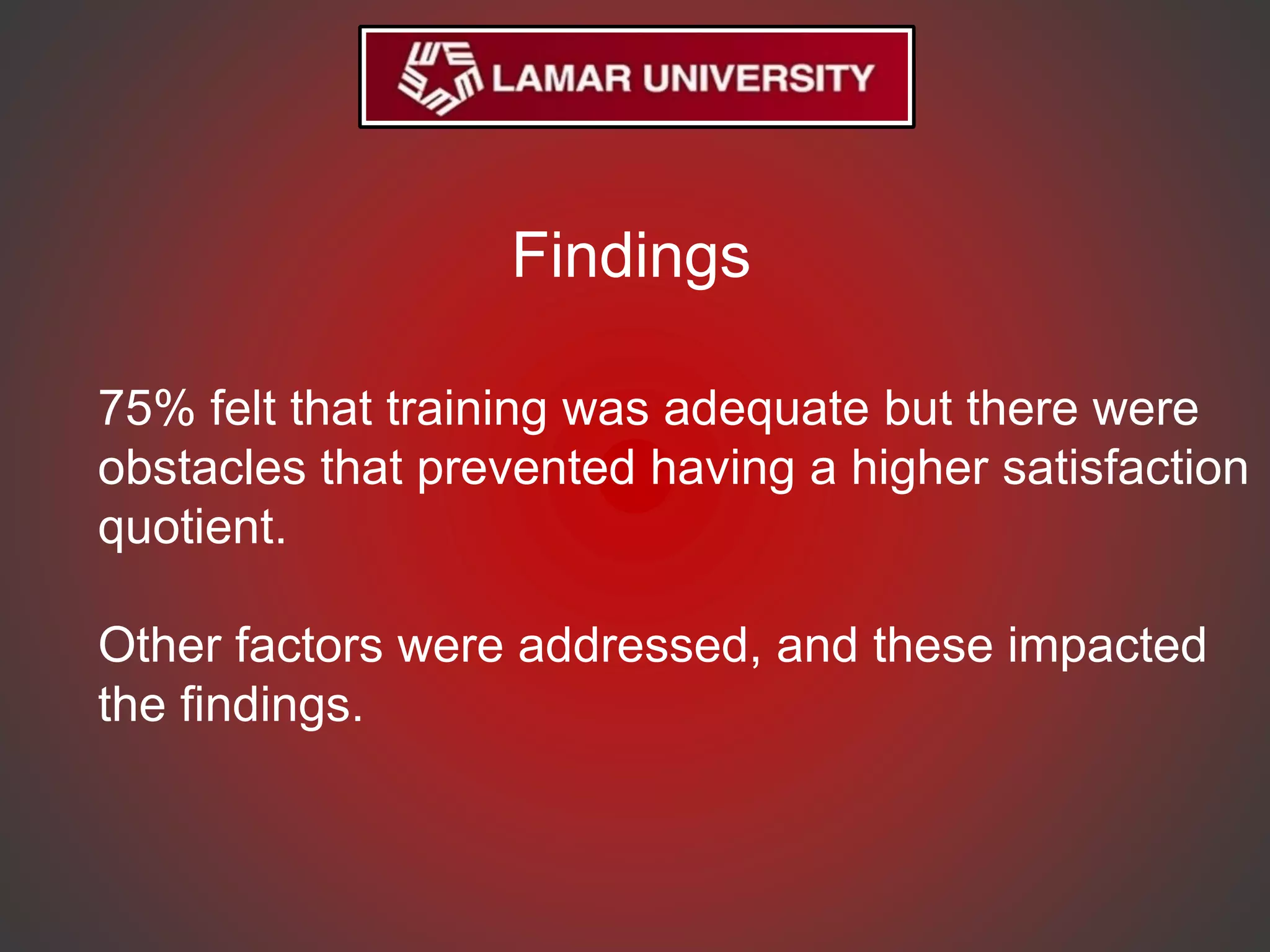
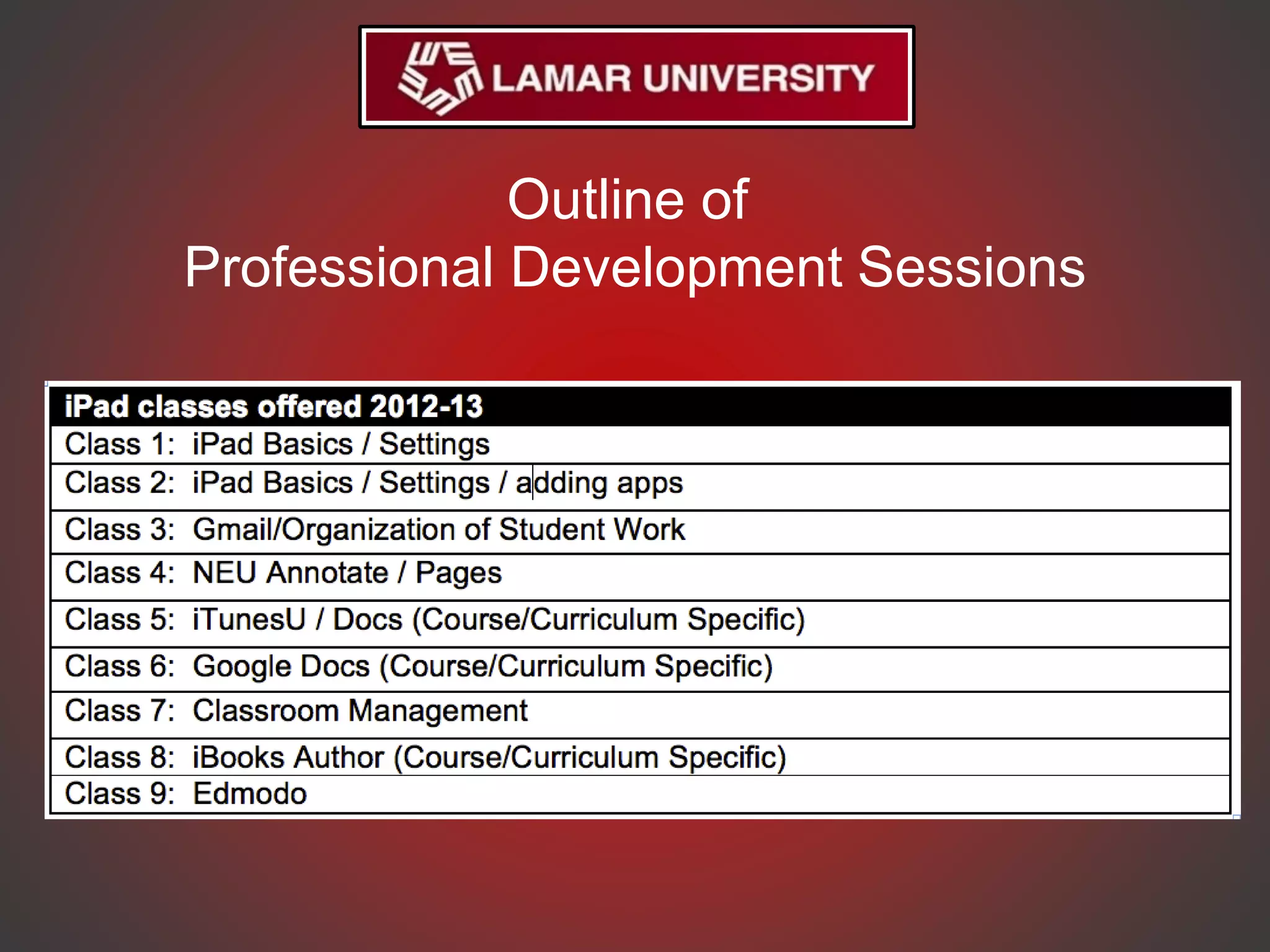
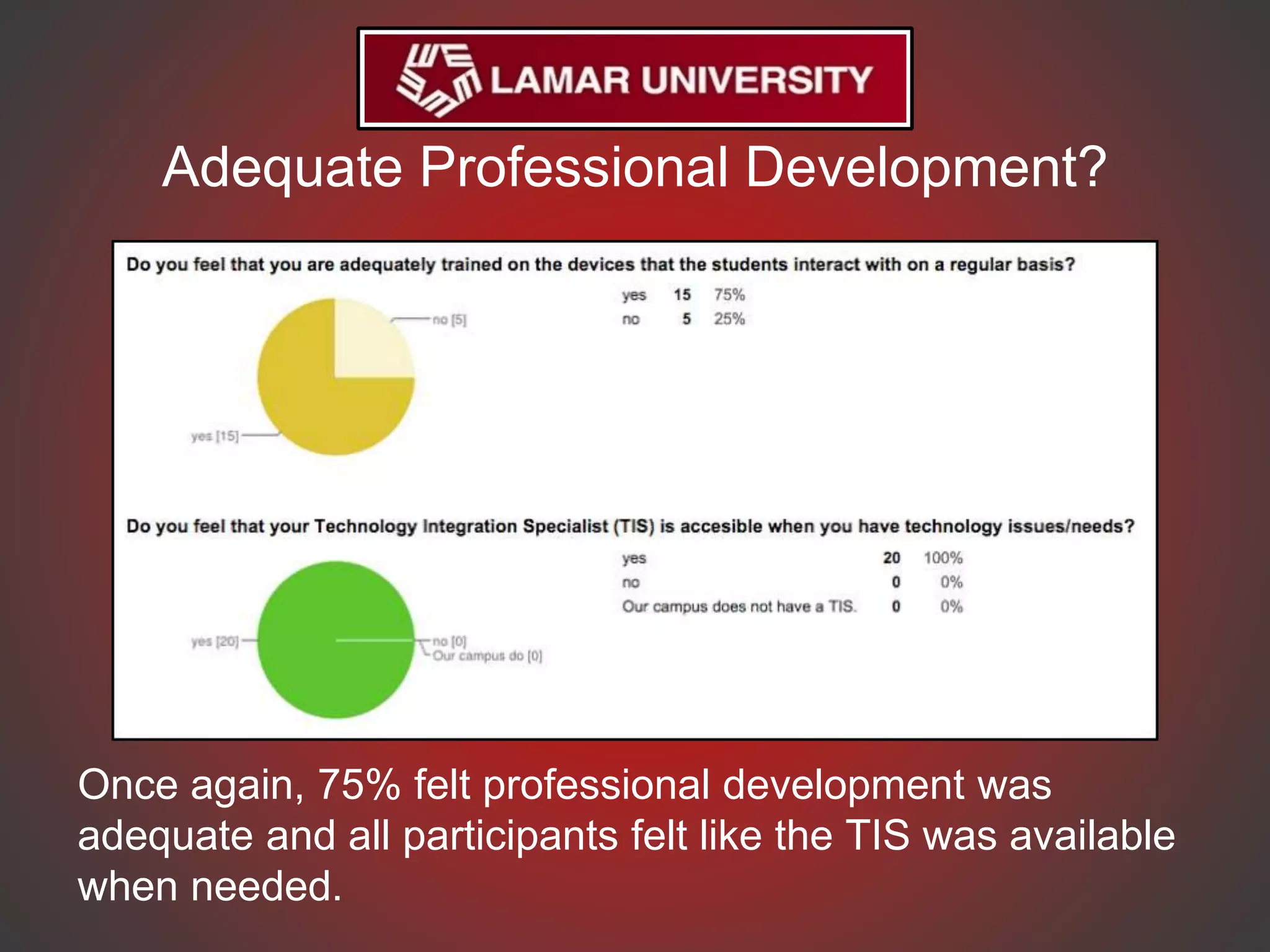
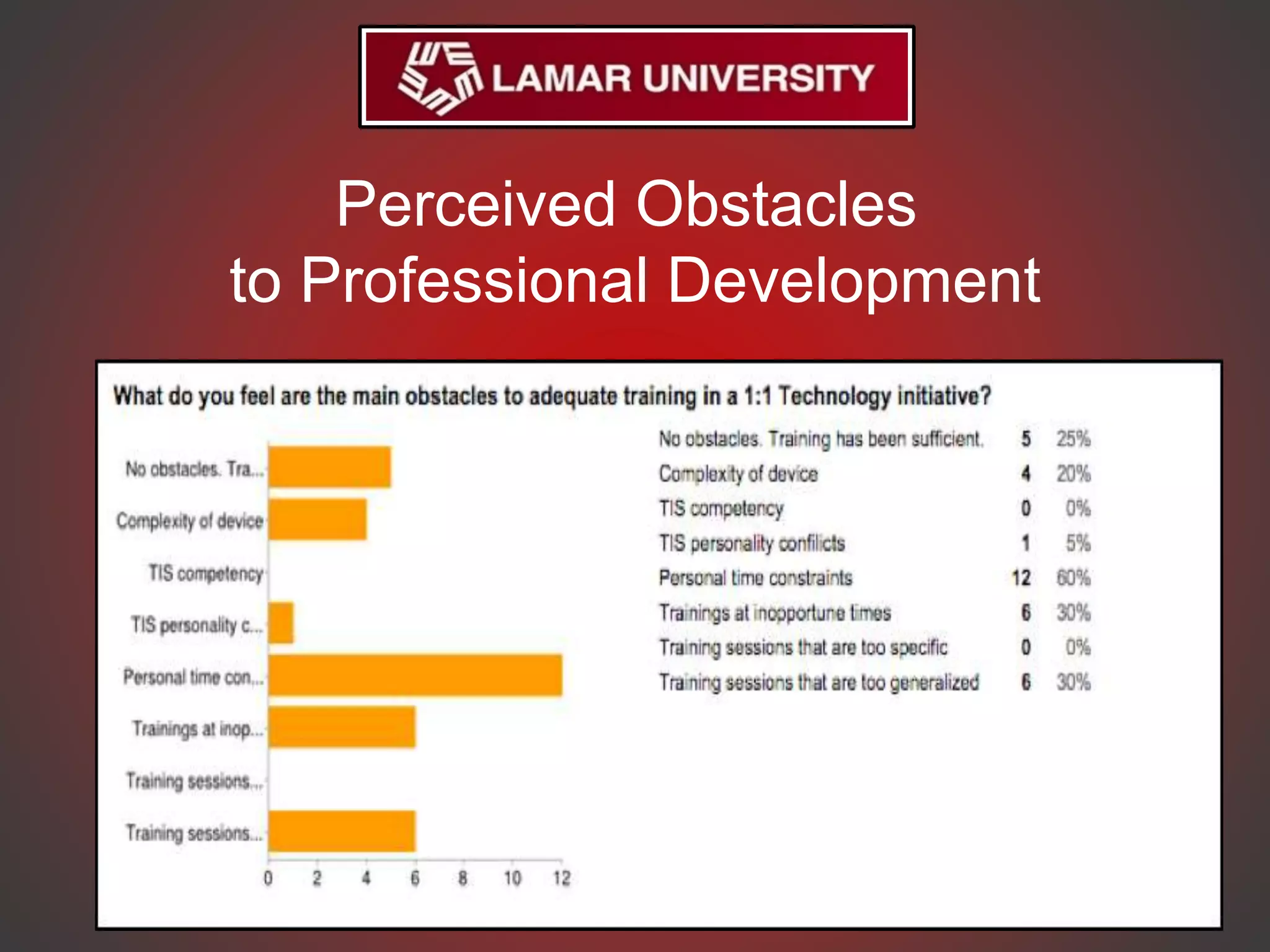
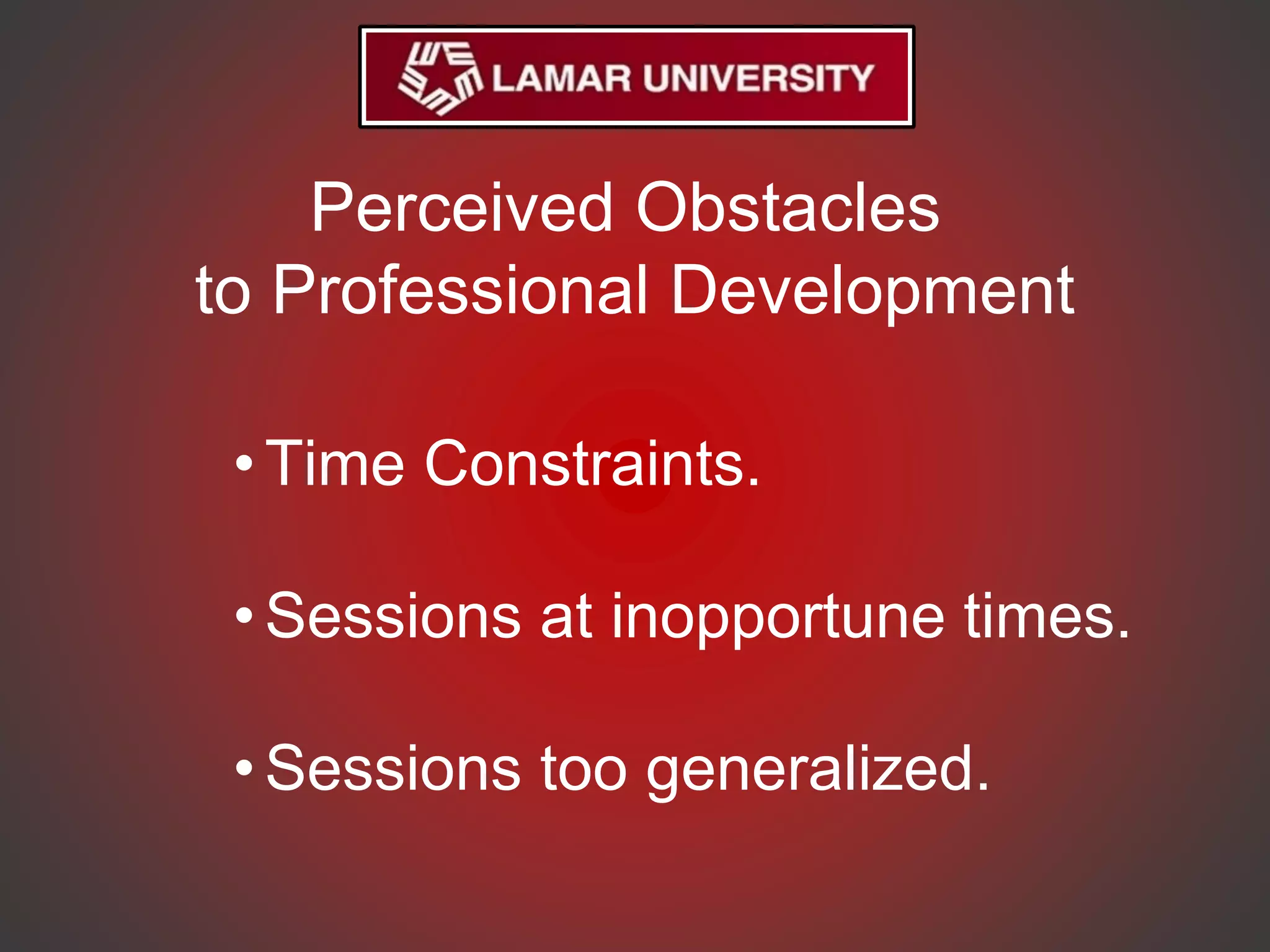
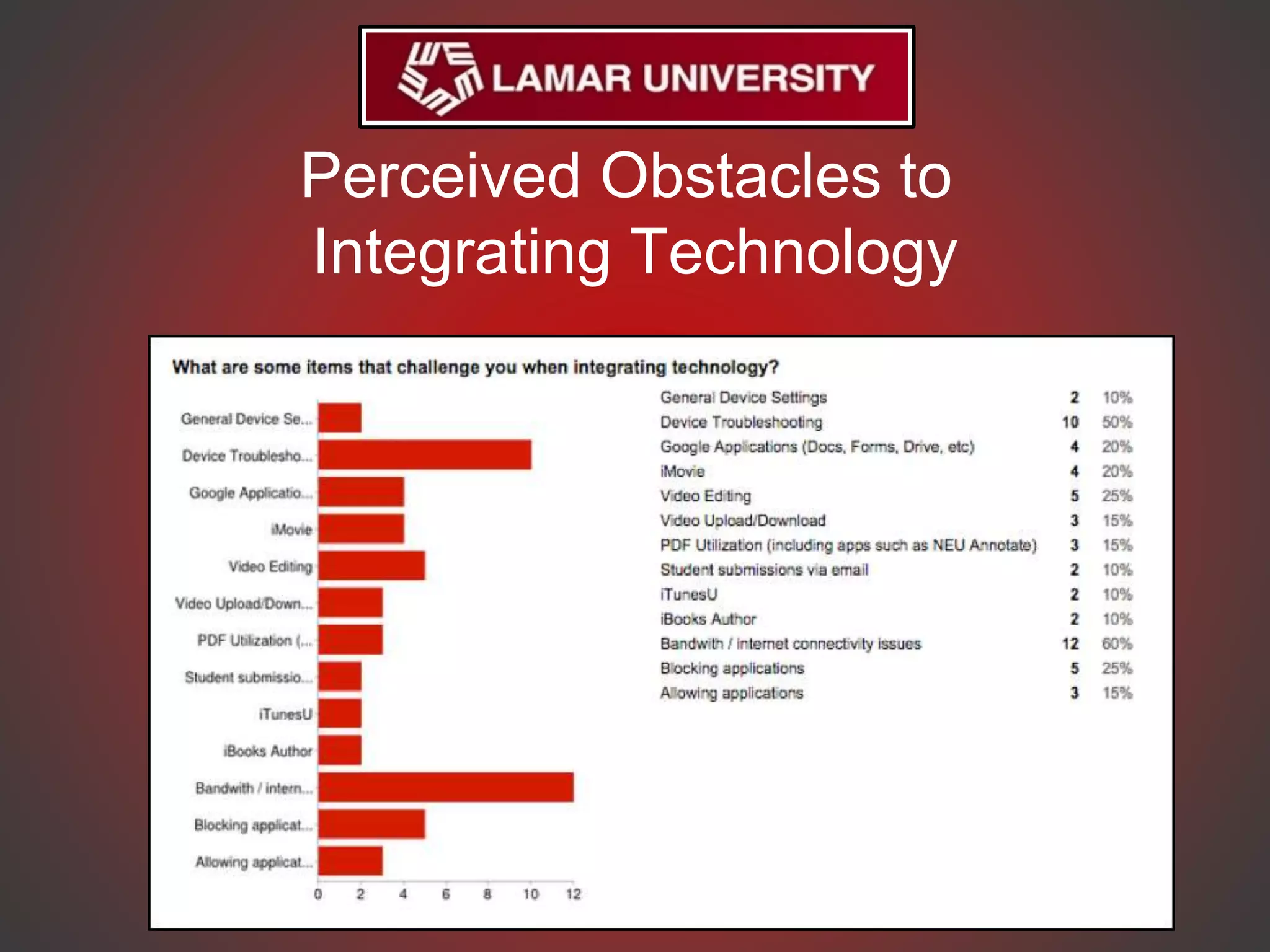
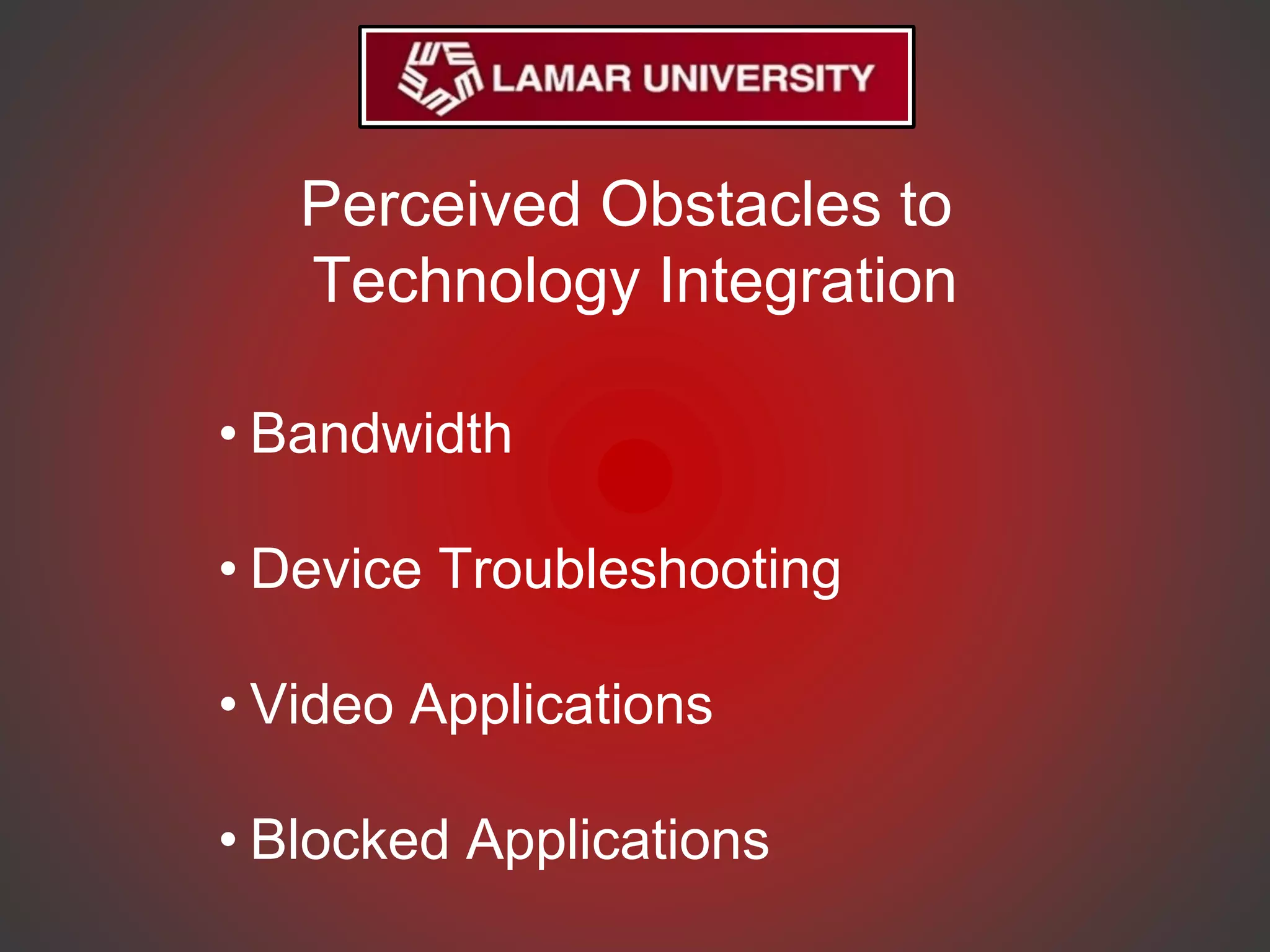
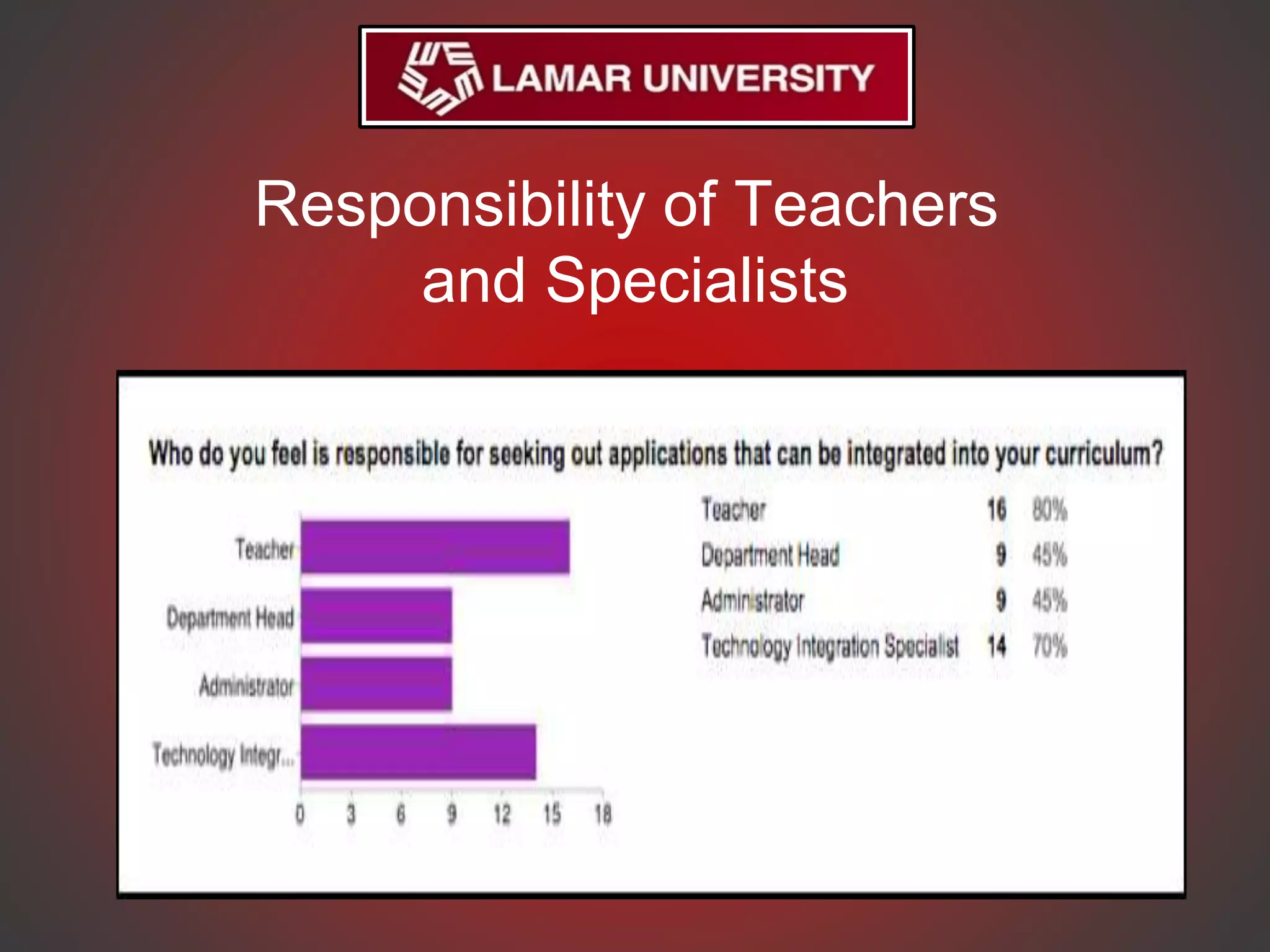
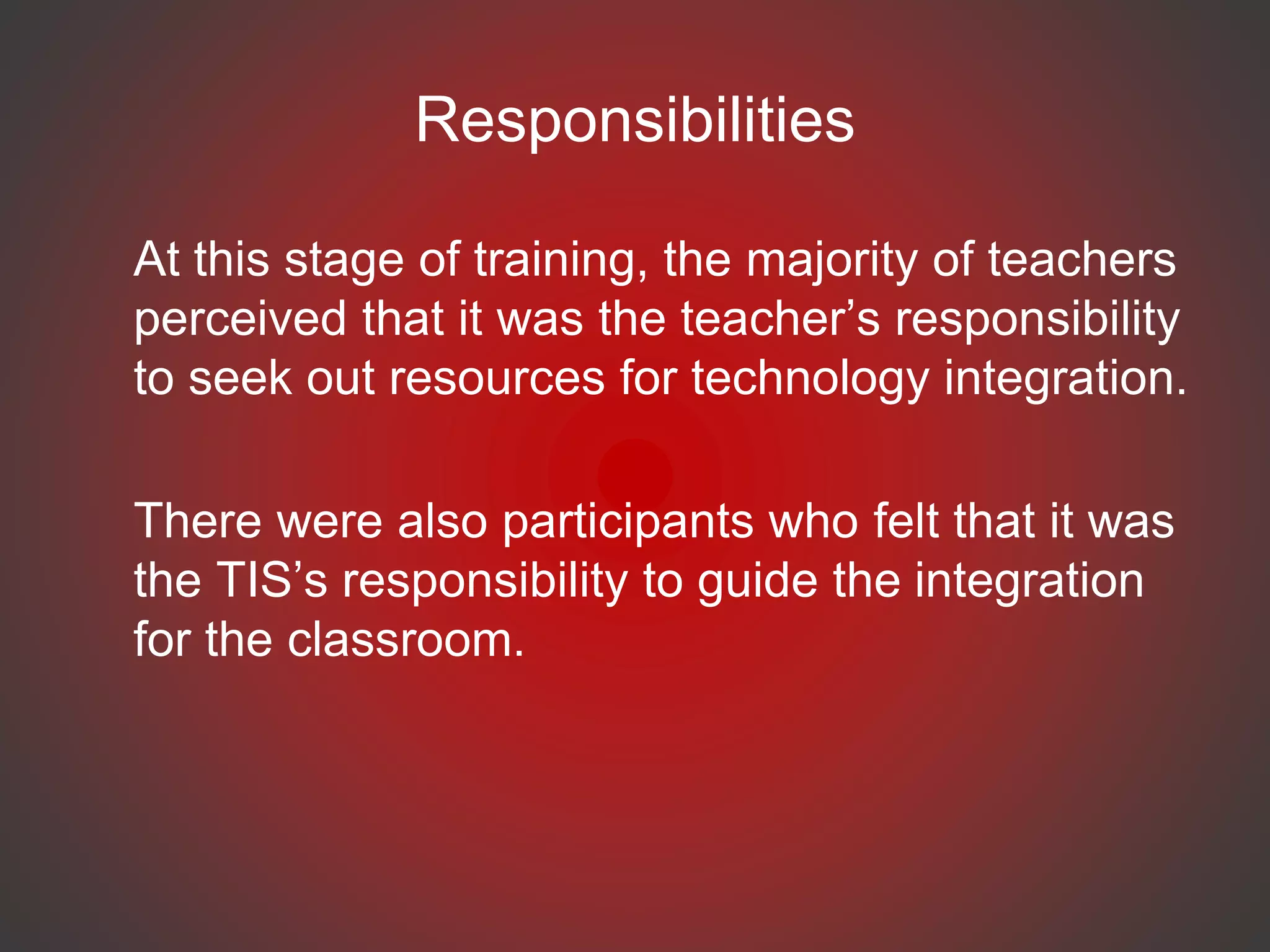
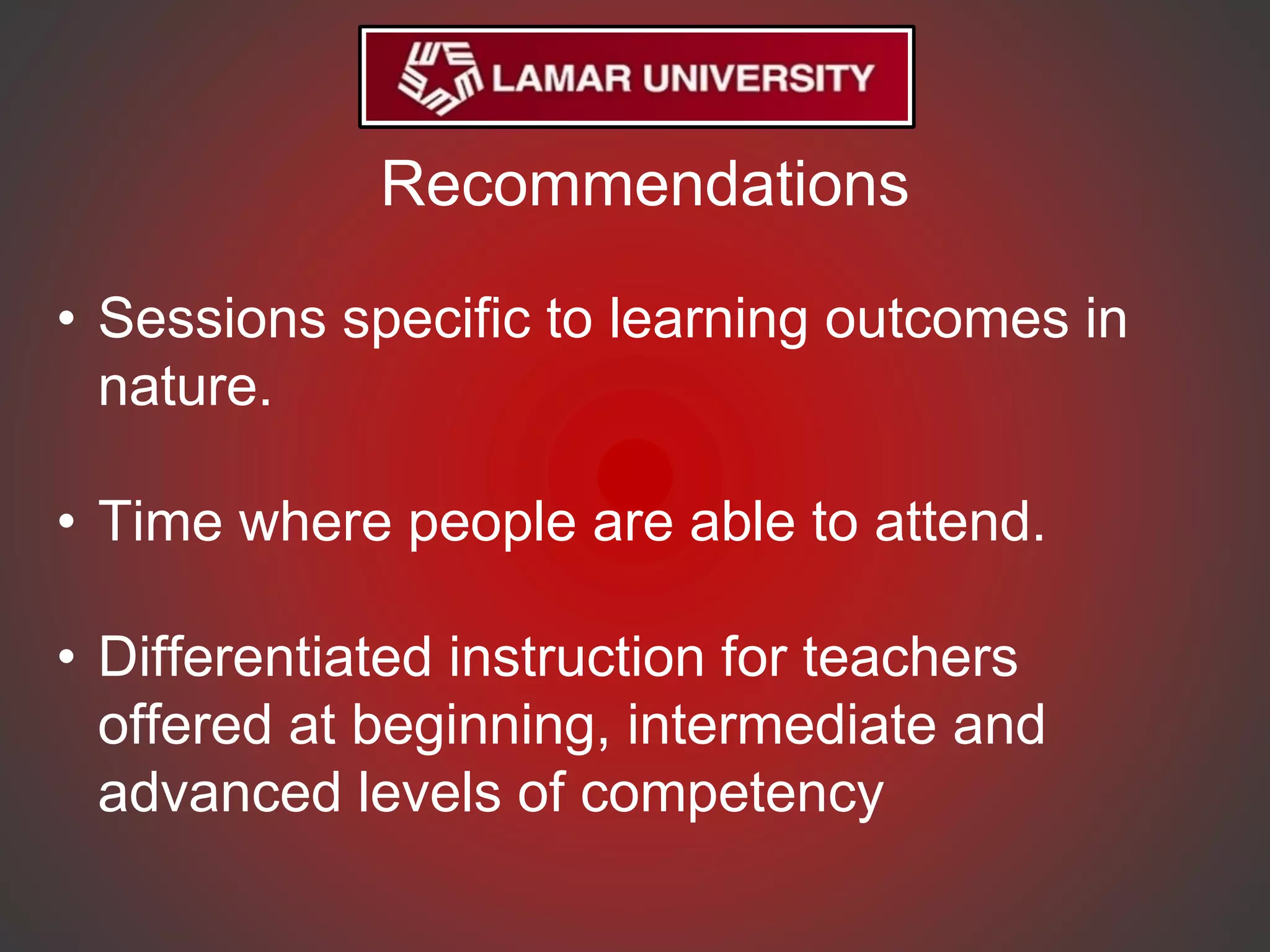
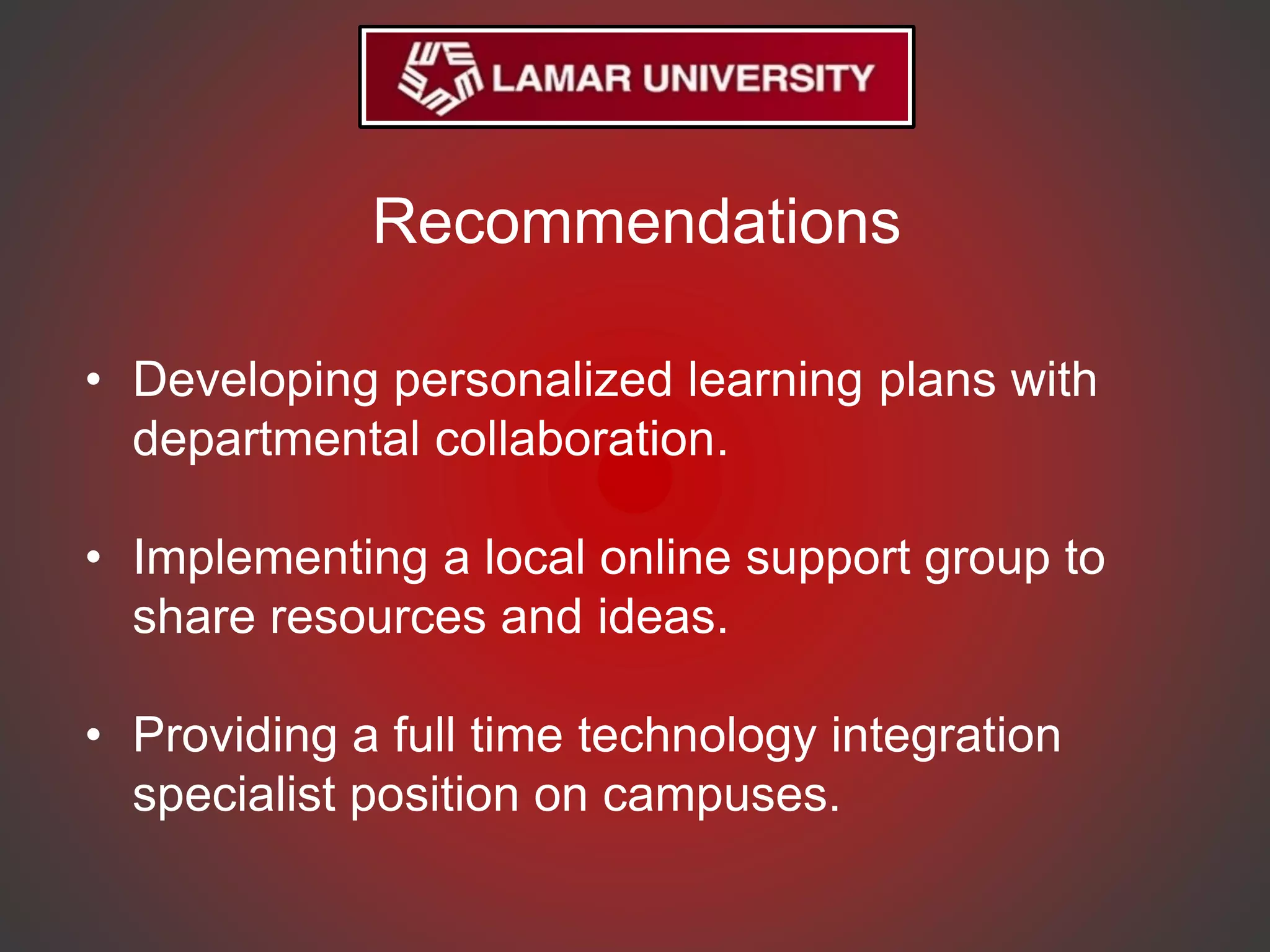
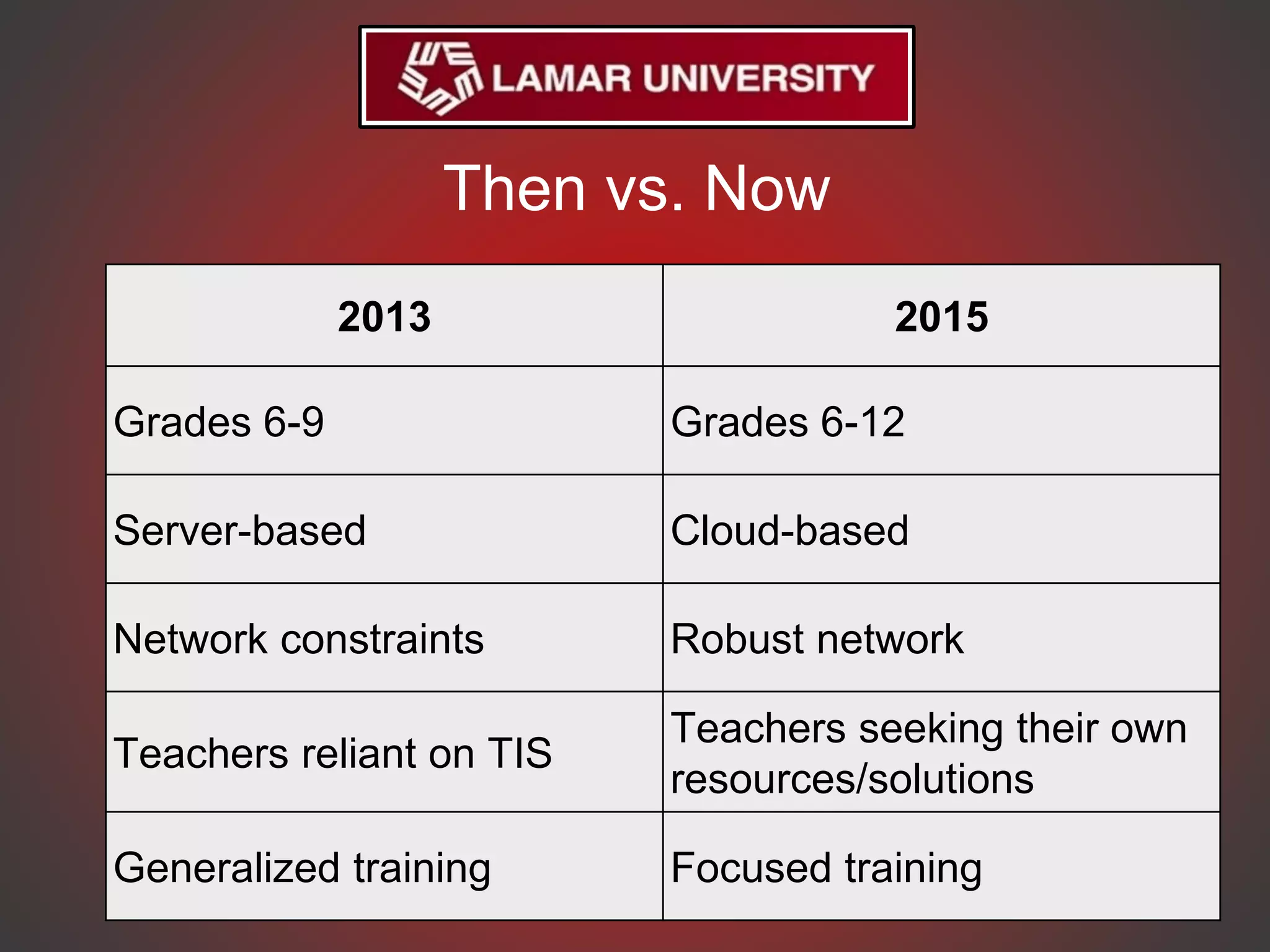
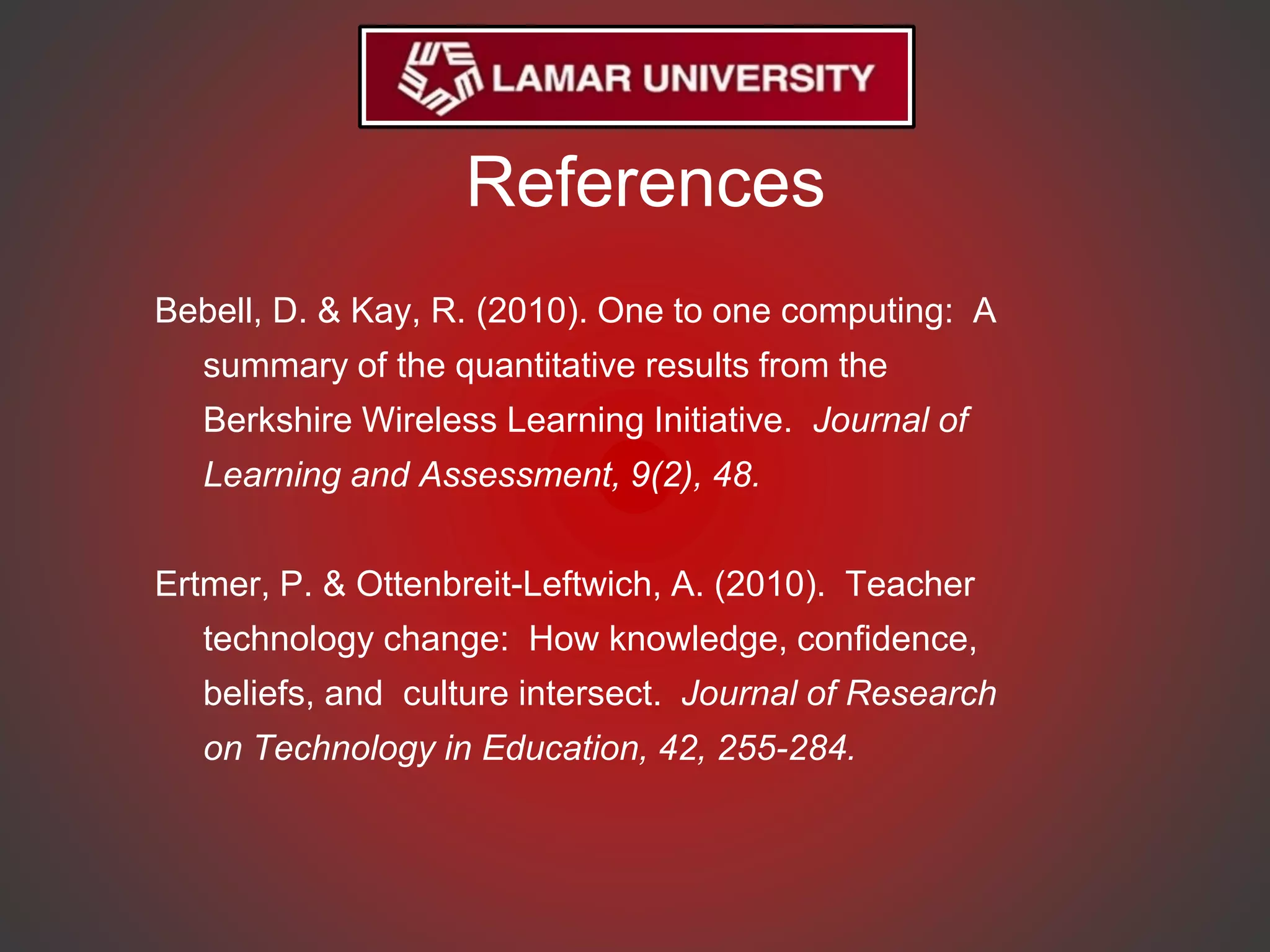
![References
Guskey, T. (2014). Planning professional learning,
Professional Learning: Reimagined, 71 (8), 10-16.
Riel, M. (2010). Understanding Action Research,
Center For Collaborative Action Research,
Pepperdine University (Last revision Sep,
2013). Accessed Online on [October 2, 2015]
from http://cadres.pepperdine.edu/ccar/define.htm
Sun Associates (2010). What the research says –
Best practices in technology integration.
Retrieved from http://ww.sunassociates.com/tiresources.html](https://image.slidesharecdn.com/nssa-professionaldevelopment10052015kada-151005135546-lva1-app6891/75/Nssa-Professional-Development-10-05-2015kada-26-2048.jpg)
